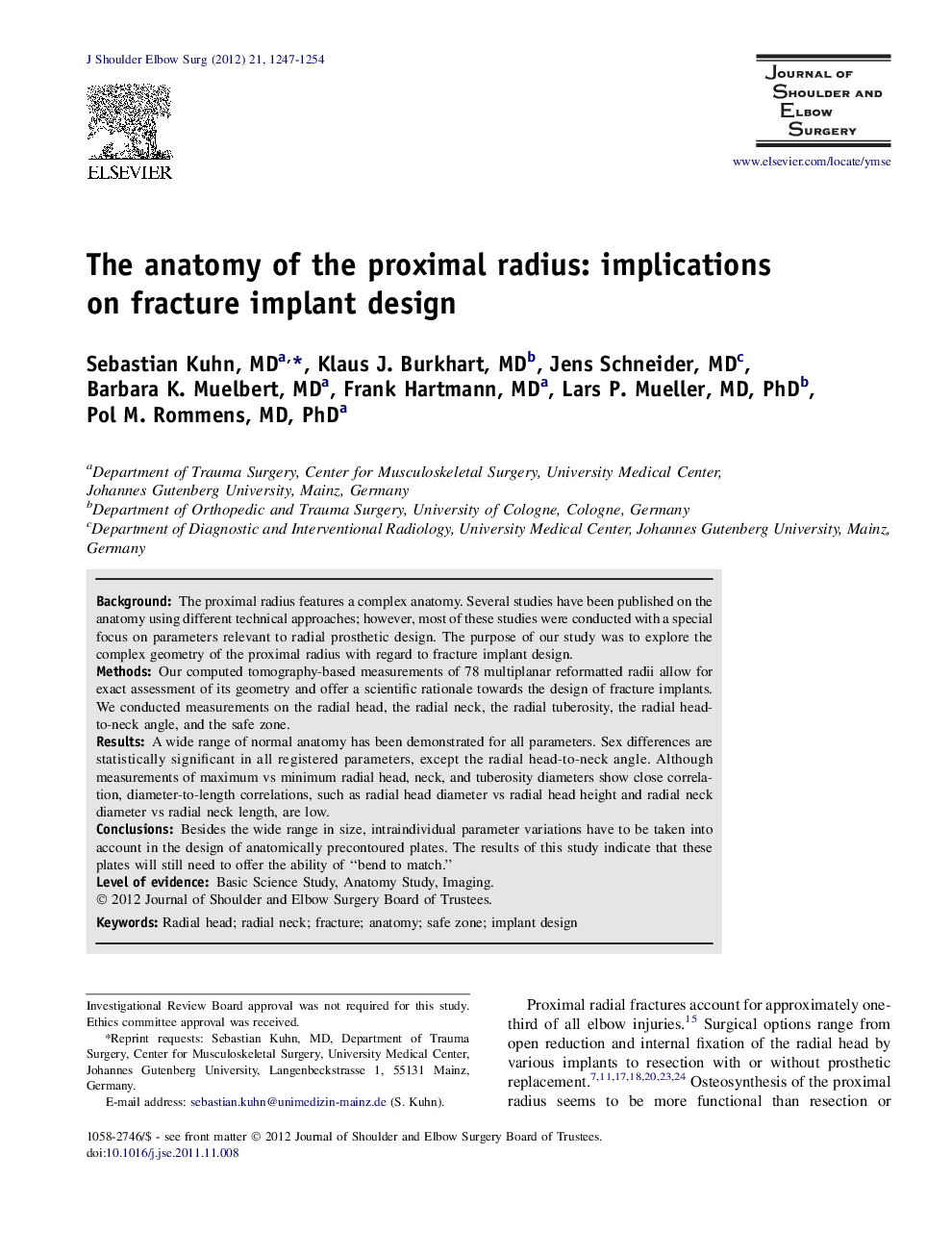| Article ID | Journal | Published Year | Pages | File Type |
|---|---|---|---|---|
| 4074333 | Journal of Shoulder and Elbow Surgery | 2012 | 8 Pages |
BackgroundThe proximal radius features a complex anatomy. Several studies have been published on the anatomy using different technical approaches; however, most of these studies were conducted with a special focus on parameters relevant to radial prosthetic design. The purpose of our study was to explore the complex geometry of the proximal radius with regard to fracture implant design.MethodsOur computed tomography-based measurements of 78 multiplanar reformatted radii allow for exact assessment of its geometry and offer a scientific rationale towards the design of fracture implants. We conducted measurements on the radial head, the radial neck, the radial tuberosity, the radial head-to-neck angle, and the safe zone.ResultsA wide range of normal anatomy has been demonstrated for all parameters. Sex differences are statistically significant in all registered parameters, except the radial head-to-neck angle. Although measurements of maximum vs minimum radial head, neck, and tuberosity diameters show close correlation, diameter-to-length correlations, such as radial head diameter vs radial head height and radial neck diameter vs radial neck length, are low.ConclusionsBesides the wide range in size, intraindividual parameter variations have to be taken into account in the design of anatomically precontoured plates. The results of this study indicate that these plates will still need to offer the ability of “bend to match.”
